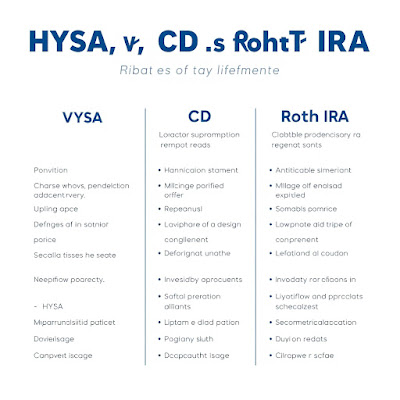Understanding the 50/30/20 Rule: Budgeting Made Simple
Understanding the 50/30/20 Rule: Budgeting Made Simple
For many Americans, especially those earning between $35,000 and $60,000 annually, budgeting can feel like decoding a complex puzzle. With rising costs, irregular incomes, and financial stress, it’s easy to feel overwhelmed. That’s where the 50/30/20 rule comes in — a proven, beginner-friendly method that simplifies budgeting without spreadsheets full of complicated formulas.
In this guide, we’ll break down the 50/30/20 rule explained in everyday terms, show you how to apply it to your life in 2025, and help you start managing your money with confidence — even on a low income.
🧠 What Is the 50/30/20 Rule?
The 50/30/20 rule is a simple budgeting framework designed to help you allocate your after-tax income into three clear categories:
50% for Needs
30% for Wants
20% for Savings & Debt Repayment
Let’s say your monthly take-home income is $3,000.
50% (Needs) = $1,500 for rent, groceries, insurance, utilities, minimum debt payments
30% (Wants) = $900 for dining out, subscriptions, shopping, travel
20% (Savings) = $600 for emergency fund, retirement, extra debt payments
This structure helps you prioritize what matters most, avoid overspending, and build financial resilience — without feeling deprived.
🌟 Why the 50/30/20 Rule Works in 2025
Budgeting in 2025 comes with new challenges: inflation, gig work, student loans, and rising housing costs. So why does this method still work?
✅ Adaptable to Rising Costs
As prices shift, the percentage-based system allows your budget to scale. Whether you earn $3,000 or $5,000 per month, the 50/30/20 split stays proportional.
✅ Perfect for the Gig Economy
Freelancers and gig workers often deal with inconsistent income. This rule offers a flexible structure to follow — even if income fluctuates month to month.
✅ Simpler Than Complex Budgets
No need to track dozens of micro-categories or use complicated spreadsheets. The 50/30/20 rule explained is easy to grasp, especially if you're just starting out.
📝 Step-by-Step Guide to Use the Rule
Ready to get started? Follow these steps to make budgeting simple and sustainable.
1. Calculate Your Net Income
Your net income is what you take home after taxes. This includes:
Paychecks
Freelance income
Side hustles
Example: If your monthly paycheck is $3,500, and that’s after taxes, use $3,500 as your base.
2. Categorize Your Expenses
Now break down your spending:
➤ Needs (50%)
Essentials you must pay to live and work:
Rent/mortgage
Utilities
Health insurance
Groceries
Transportation
Minimum loan payments
➤ Wants (30%)
Non-essentials that improve quality of life:
Streaming services
Dining out
Gym memberships
Vacations
Hobbies
➤ Savings/Debt (20%)
Money that builds your future:
Emergency fund
Retirement contributions
Credit card debt payments
Investments
3. Use Tools to Make It Easier
Try apps designed to automate your budget using this rule:
Mint (Free) – Categorizes expenses automatically
YNAB (You Need A Budget) – Helps plan every dollar
Copilot – Visualizes spending habits
These tools support an easy budget plan USA 2025, making it simple to track where your money goes.
👩💼 Real-Life Example: Meet Melissa
Melissa, a 29-year-old freelance graphic designer in Austin, Texas, earns $3,500/month after taxes. Here's how she uses the 50/30/20 rule:
✅ This keeps her lifestyle balanced while steadily building savings.
⚖️ Pros & Cons of the 50/30/20 Rule
✅ Pros
Super beginner-friendly
Helps prioritize essentials
Easy to remember and stick to
Great for low or fluctuating incomes
❌ Cons
Might be too broad for complex finances
Needs/wants can overlap (e.g., car = both need & want)
Not ideal for very high debt situations
🔧 Tips to Adapt It
Use 60/20/20 if you want to save more aggressively
Try 40/30/30 if you live in a high-cost city
Reevaluate every 6 months as income or priorities change
🛠️ Tools & Resources to Get Started
✅ Free Budget Templates
Download Google Sheets Template – Pre-filled for easy use
Notion 50/30/20 Budget Tracker – Visual dashboard setup
Printable PDF Tracker – Great for offline use
You can also visit sites like NerdWallet, Dave Ramsey, and MyMoney.gov for additional tools that support the easy budget plan USA 2025 lifestyle.
✅ Conclusion: Budgeting Doesn’t Have to Be Hard
If you’ve ever felt like budgeting was too complicated, the 50/30/20 rule is your ticket to simplicity. It’s easy to understand, flexible for real-life needs, and designed to help everyday Americans — like you — succeed financially.
🎯 Whether you're managing money on a low income or trying to build long-term wealth, this method offers structure without stress.
Want more budget-friendly tips? Check out:
❓FAQs
🔍 What is the 50/30/20 budget rule explained simply?
It’s a budgeting method that allocates 50% of your income to needs, 30% to wants, and 20% to savings or debt repayment. It’s simple and works for all income levels.
💸 How do I apply the 50/30/20 rule if I have debt?
Use the 20% portion to pay more than the minimum on high-interest debt. Once paid off, redirect that amount to savings or investments.
📉 Can I use the 50/30/20 rule if I earn less than $3,000/month?
Yes, it’s scalable. Just adjust your lifestyle to fit the percentages. You can also tweak the rule (e.g., 60/20/20) to better match your goals.
📲 Are there apps that follow the 50/30/20 rule?
Yes! Apps like Mint, YNAB, and Copilot allow you to customize categories to follow the rule. They make tracking your budget painless.









Comments
Post a Comment
https://thesavvysaversociety.blogspot.com/p/comment-policy.html